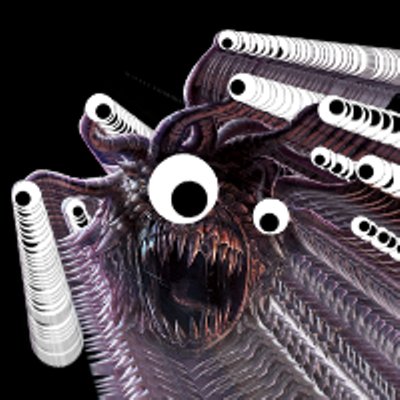Anyway, in the 'Rig' thread we've seen a LOT of photos of external USB drives, well, I went a different route. When I was building my i5 2500k system, my then current desktop, an Athlon 64 3200+ would be retired but I felt like turning it into something useful. So I built it into a storage server and home theater PC.

So, this thing I must admit is kinda shitbox. The choice of this specific system wasn't super wise but it did cost me almost zero (If you don't count the hard drives). Most RAID options have the issue of not being easily expanded and, well, maybe you don't want EVERYTHING to be redundant? I'm using DriveBender ( http://www.drivebender.com/ ) to pool multiple physical drives into what Windows 7 thinks is one single, non-redundant drive. As an added bonus, Drive Bender can set specific FOLDERS to be redundant, so CRC checksummed reundant copies will be kept on different physical drives. This way my 'Projects' folder is redundant and roughly as safe as if it were on a RAID but everything else isn't redundant. I'm not hugely concerned about archiving anime, movies and television series against data corruption, so that works great. In the case of my current box, it thinks it has a giant 7TB drive. Since the case it's in can hold 10 drives if you max it out, it would cap out fairly high. Since I only add drives as needed and buy the drive that gets me the most TB's for my $, the total size varies. I'm just gonna keep cramming bigger and bigger drives into it.
That's not bad for recycled crap, and really, it IS recycled crap. The mobo will only wake from USB if hibernated (And if you change the USB devices while it's hibernated, it corrupts the file), the network adaptor thinks it's MAC address is all 0's (Really, it's like that in the FIRMWARE somehow), the onboard SATA1 ports can't auto-negotiate so they're useless with modern drives and it forces me to use a PCI SATA1 card, the graphics is an AGP card, to allow DirectX Video Acceleration and well, yeah crap. I mainly blame the crappy mobo I bought years ago. The storage and the ethernet adaptor on one PCI bus, oh my the I/O limitations! At the end of the summer I'll be replacing this thing's guts with an AMD Llano based system, it'll offer more power, greater expandiblity, and modern features without a high price tag.
...But hey, let's watch movies on this thing too. The machine sits next to the television in my bedroom and it's running XBMC ( http://xbmc.org/ ) which is a great home theater front end. It doesn't just 'play files' but it builds libraries, gathers synopsis, thumbnails, marks what you've watched and such. Just add a MCE compatible remote and enjoy the machine without a keyboard. XBMC also has streaming video options and I think I'll be getting rid of my cable TV at the end of my contract.
Since the machine can run 24/7 as a server, as of today it's going to be hosting media for another machine too. My roommate bought a Zotac Zbox with an E-350 inside it for our living room and I'm building it into a light weight XBMC machine. It won't need much storage itself, it'll just play content off the network from the big box. What I find funny here is both machines, one with 2004 hardware and the other with 2011 hardware, are about just as powerful. And one is a heck of a lot smaller and cuter looking. It's kinda amazing how far tech has come, that thing is like the size of a Wii.

Well, I found this solution more elegant than a pile of USB drives and maybe someone else will find the topic interesting.



